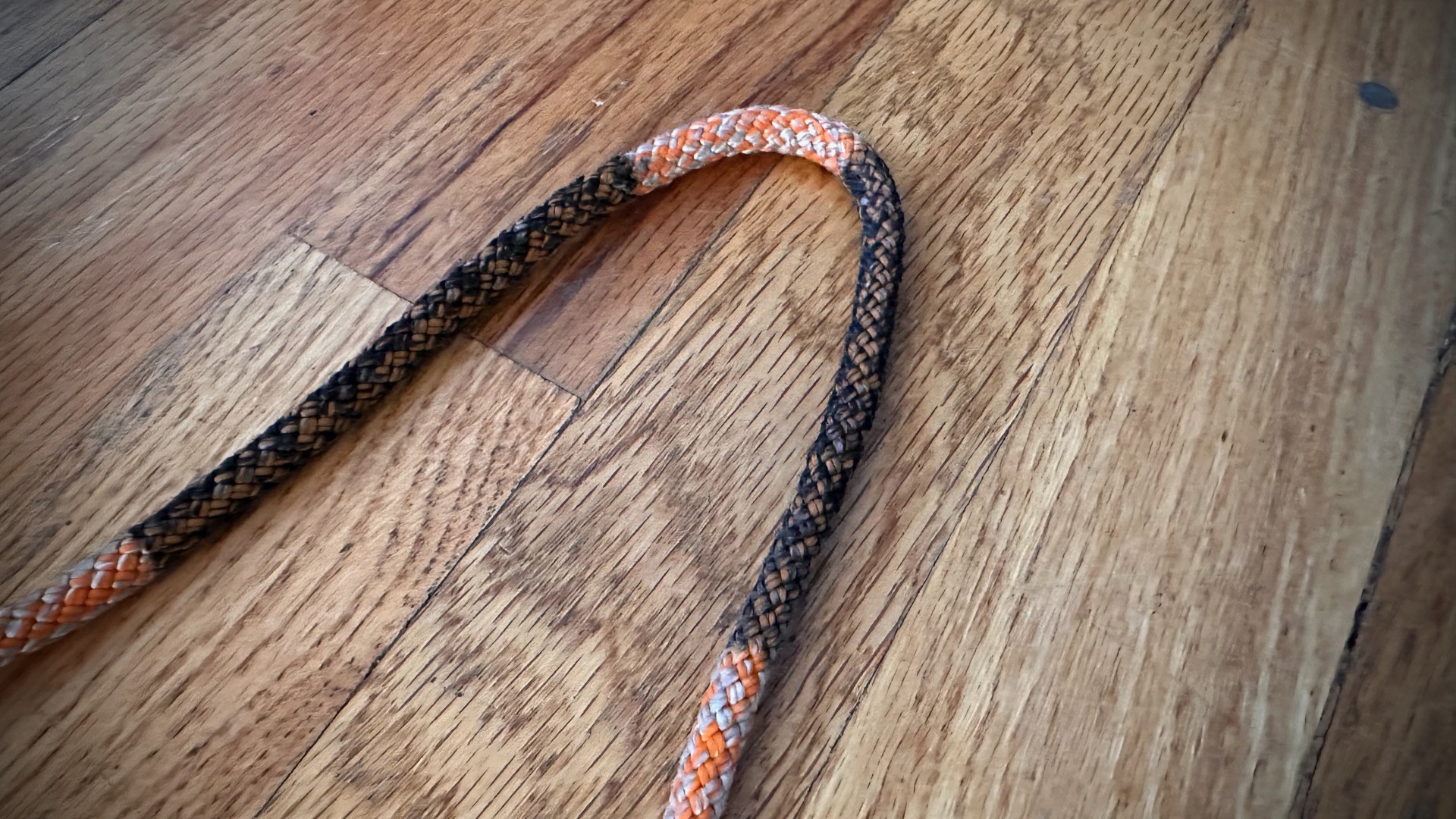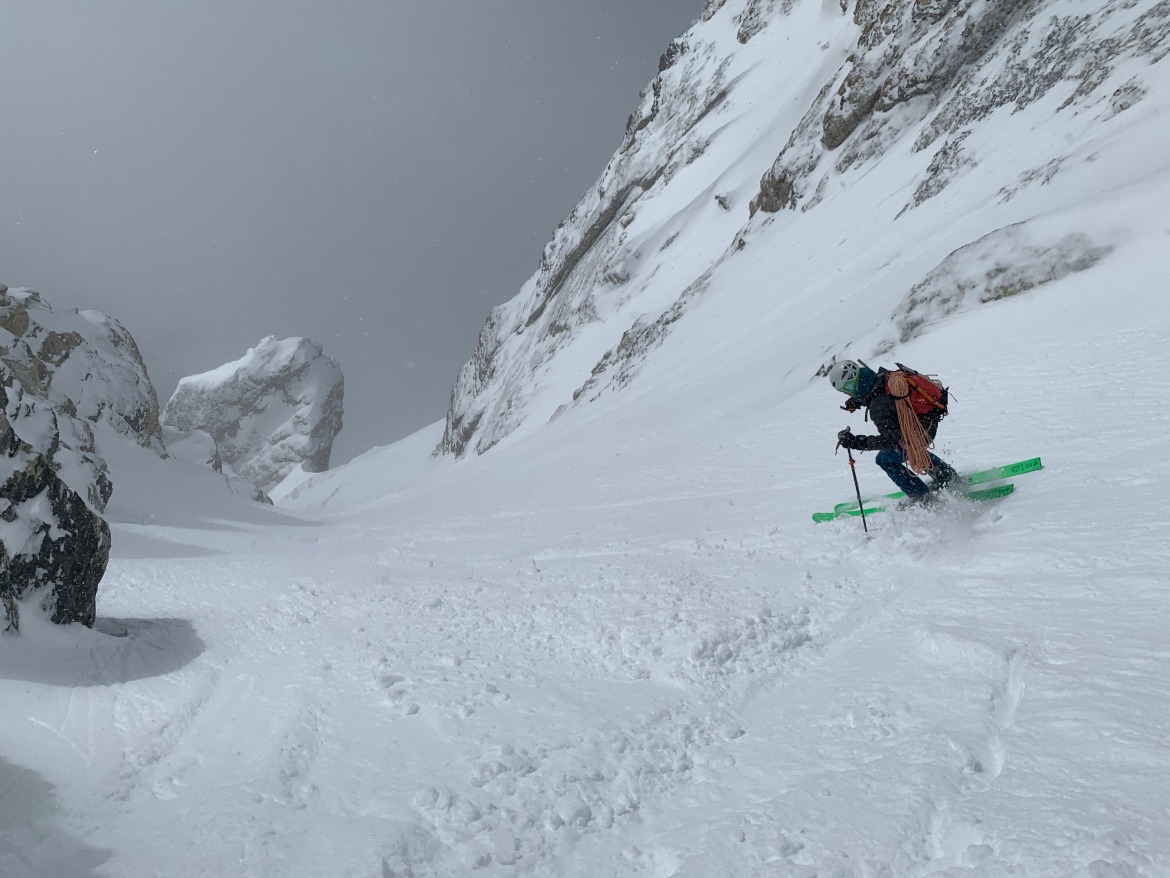
Coiled onto the skier’s pack, the RAD line offers a lightweight hyper-static rope option for some technical ski missions. Know when to use a RAD line, and when to leave it at home. Photo: Ben Hoiness.
Petzl’s RAD line has become a standard for many ski mountaineers. WildSnow looks at this hyper-static rope and discusses its range of applications and limitations.
The Petzl RAD line has been on the market since 2015. This rope was the first popular skinny line to use High-modulus polyethylene (HMPE) to reinforce the sheath, giving it incredible strength, durability, UV resistance, and a roughened feel for better handling. These attributes are critical to a rope for use in some demanding situations, and skinny means 6mm in diameter.
But why is the RAD Line so good? A big part of that stems from the fiber itself. These fibers’ brand names are known as Dyneema or Spectra and have been used in applications from sailcloth fabrics to woven rope sheaths like on the RAD line. HMPE has a strength-to-weight ratio eight times greater than high-strength steel. But there are some limitations that you should know about if you want to incorporate this rope into your kit.
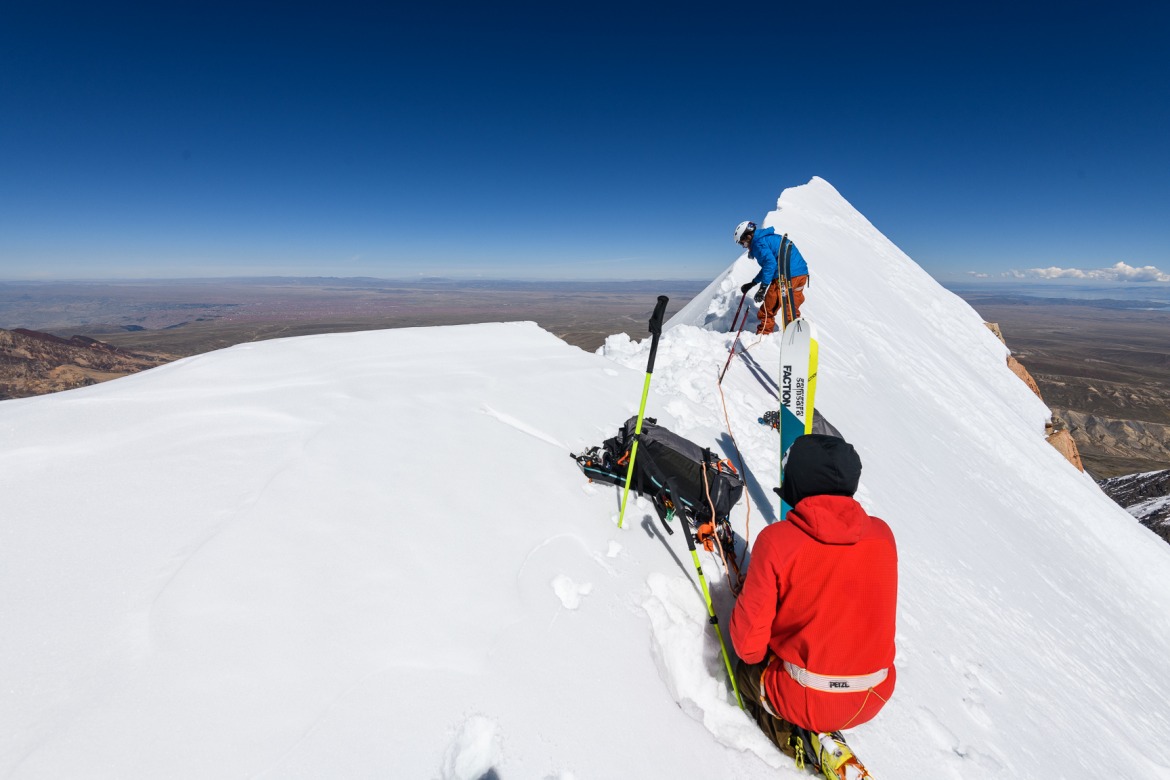
The RAD line incorporated into a “soft” anchor as the skier is belayed towards the day’s ski objective. Photo: Fred Marmaster.
Types of ropes:
Dynamic: a climbing rope with some elasticity or stretch. This feature (the stretch) absorbs some of the energy when the belayer holds a fall. In Petzl’s standard dynamic test, the stretch of a dynamic rope must be less than 40%. Dynamic ropes usually stretch between 10%-35%.
Static: this type of rope has little, if any, stretch. According to Petzl, a single static rope stretches less than 10%. Be very wary of shock loading a static rope system; its use requires careful technique and consideration to mitigate potentially dangerous forces, since energy is not dissipated by rope stretch. Do not shock load a system incorporating this type of rope as the energy is not dissipated by rope stretch.
Hyperstatic: a sibling of a static rope, has less than 2% elongation. Use this line wisely.
RAD line Basic Stats
Weight g/m: 22g
Diameter: 6mm
Certification: CE EN 564, UKCA
Materials: High-modulus polyethylene (HMPE), polyester, nylon
Static Elongation: less than 2%
Uses: Rappelling, Hauling, Crevasse Rescue, Belayed Ski Cuts, Short Roping.
Tensile Strength: 12KN
MSRP: 30M-$239.95, 60M-$459.95
Hyperstatic lines have eked their way into skiing over the past decade. These no-stretch (less than 2%) lines are designed to be thin, light, and strong to curb the burden of pack weight on big ski missions. These ropes find use in rappelling and pull cording and are certified for glacier travel, crevasse rescue, belayed ski cuts, and maybe even a quick belay for a steep step (body belay only). Unlike a dynamic rope there are some guidelines from the manufacturer that many skiers may not be used to.
1. Rappelling– sliding down these skinny lines is a skill set of its own, especially when you add skis, gloves, and snow. Many micro-line rap devices, such as the Edelrid Micro Jul, the Grivel Scream, and the Petzl Reverso, are available to control the rate of descent more effectively. Still, these devices should often be paired with a skinny backup such as a 5mm prusik to maximize security in case of a slip. There are also some techniques to consider, like putting both strands through the same side of the device or adding carabiners; both will increase friction. Another technique is to use a Munter or Italian hitch instead of a rappel device. It should go without saying; hone these techniques in low-consequence terrain.
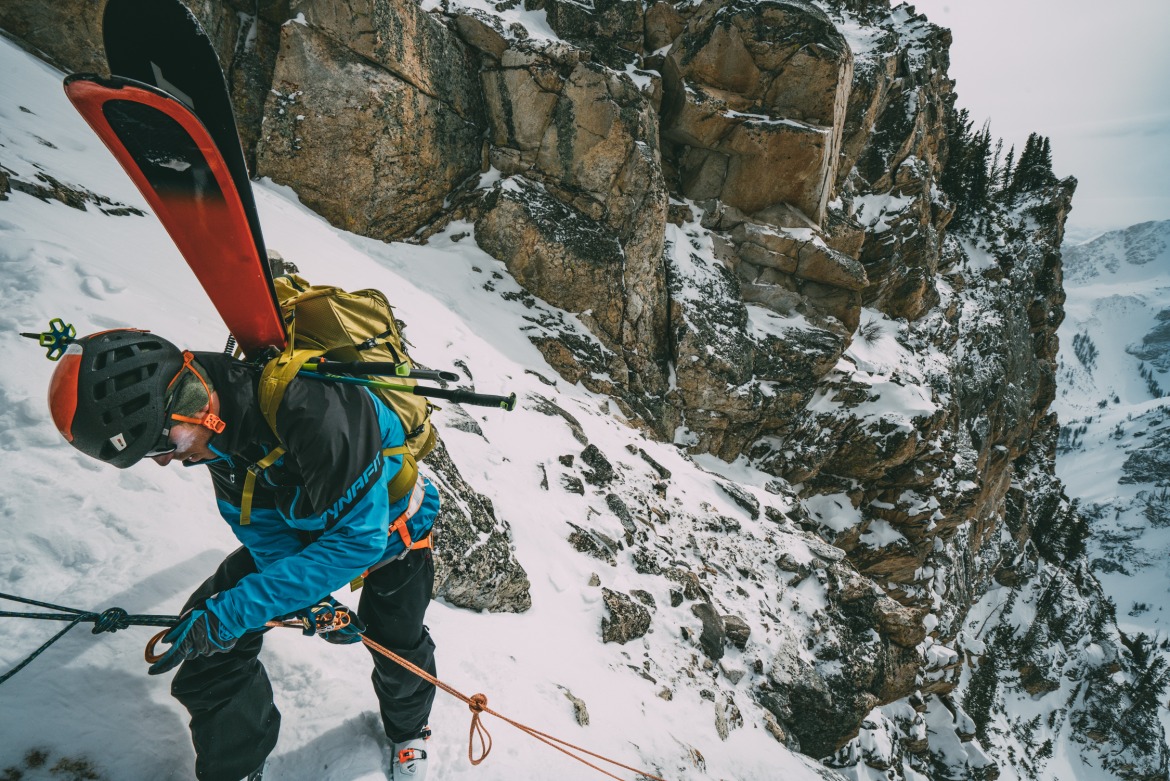
A Petzl RAD line is a great tool for many applications. Rappelling into the day’s line on the RAD line. Photo: Drew Smith.
2. Anchors– These ropes, of course, work great for static loads as a rappel or haul line, but what if you want to use them for a ski belay? Most manufacturers recommend that you don’t use these ropes with any static anchors for any dynamic activity, i.e., belayed ski cuts.
So how do you overcome this using the RAD line? The critical component is introducing dynamic elements into the system. In this case we are thinking about a soft belay; this is done by incorporating your body into the system whenever the load is dynamic. Examples are the seated hip belay and a munter off the belay loop. You (the belayer) can still be attached to a static anchor, but the line between you and your partner must be straight, body to body. This belay arrangement allows you to avoid unwanted static shock load directly to an anchor, which is bad for you, your anchor, and your rope.
3. Progress Captures-The RAD line has specifically been designed and tested to work with Petzl Micro Traxion, the Nano Traxion, and the Tibloc. These devices are standard to glacier rescue kits these days and are worth having. A few other “non-certified” devices also work, such as the Edelrid Spok. But, neither Petzl nor the UIAA has tested these devices for use with the RAD line.
4. Knots– Knots always weaken your system but especially with a line that’s 6mm and made from HMPE. A single knot can cut the tensile strength in half from 12KN to 6KN.
WildSnow Resources Related to the RAD line
Techniques and Considerations for Ski Mountaineering on Glaciers.
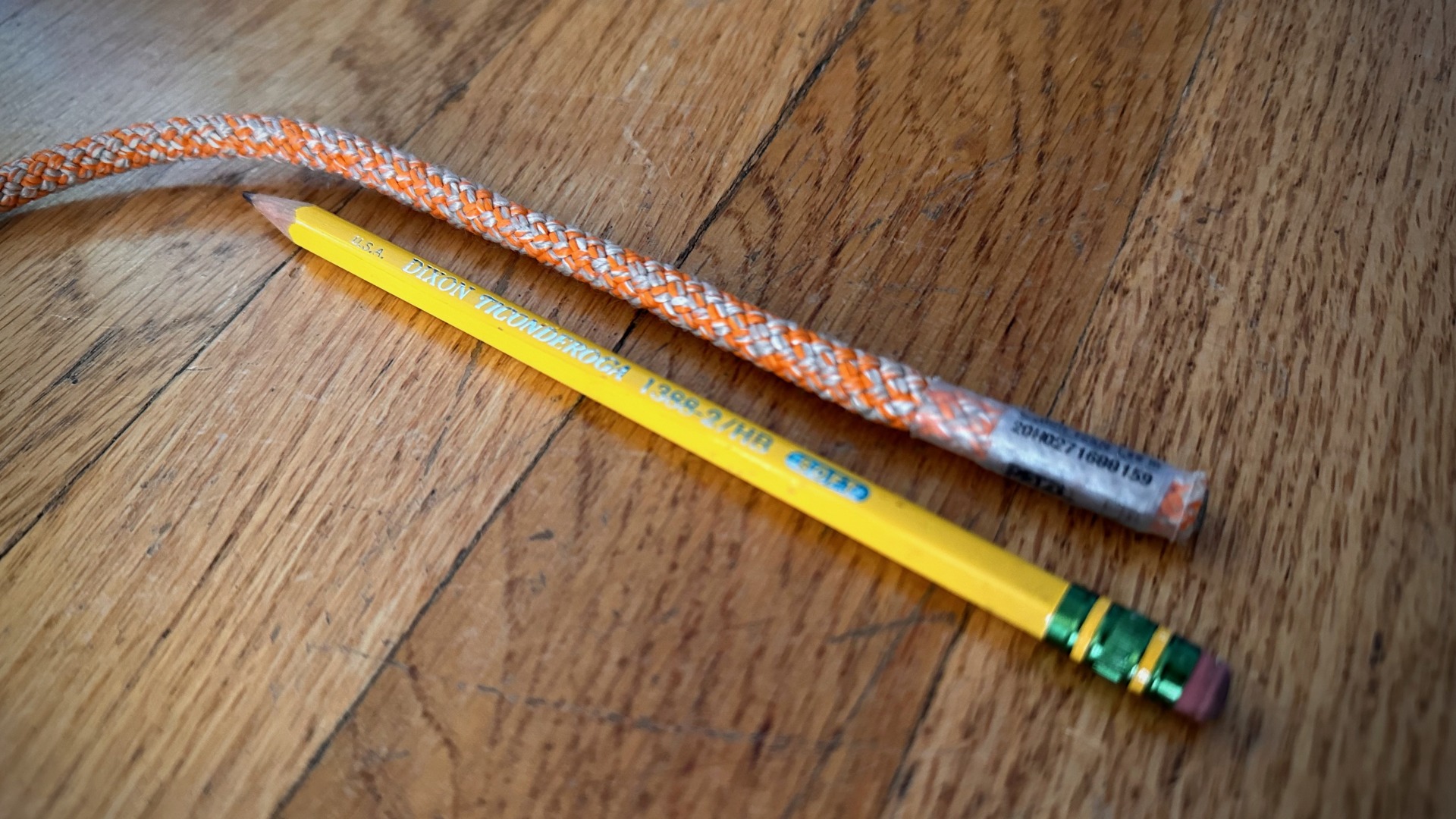
Tried and true, the RAD line has been used to good effect in the mountains. It’s still pencil thin (6mm), yet durable and high-performing for specific applications.
6KN is still a difficult amount of force to reach if you are implementing soft anchors, but that quickly changes with a static anchor. This is just another reason why knowing a lot about these lines is essential if you plan to implement them into your kit.
In many circles, the RAD line has become the standard to which all other lines are compared. It’s incredibly light, handles well, and allows for better efficiency in hauling scenarios.
As skiers, we respect gravity and are grateful for its gifts while descending. But the universe works in strange and often predictable ways like this: skinnier ropes are more prone to tangle. As a 6mm line, the RAD line will tangle. Knowing this might incentivize proper rope management and coiling/stacking before, during, and after use. We’ve found the 60m RAD line a beast to detangle while the 30m is more manageable…less rope means less complex detangling. And skinnier ropes can be harder to pull, too, something that’s good to know.
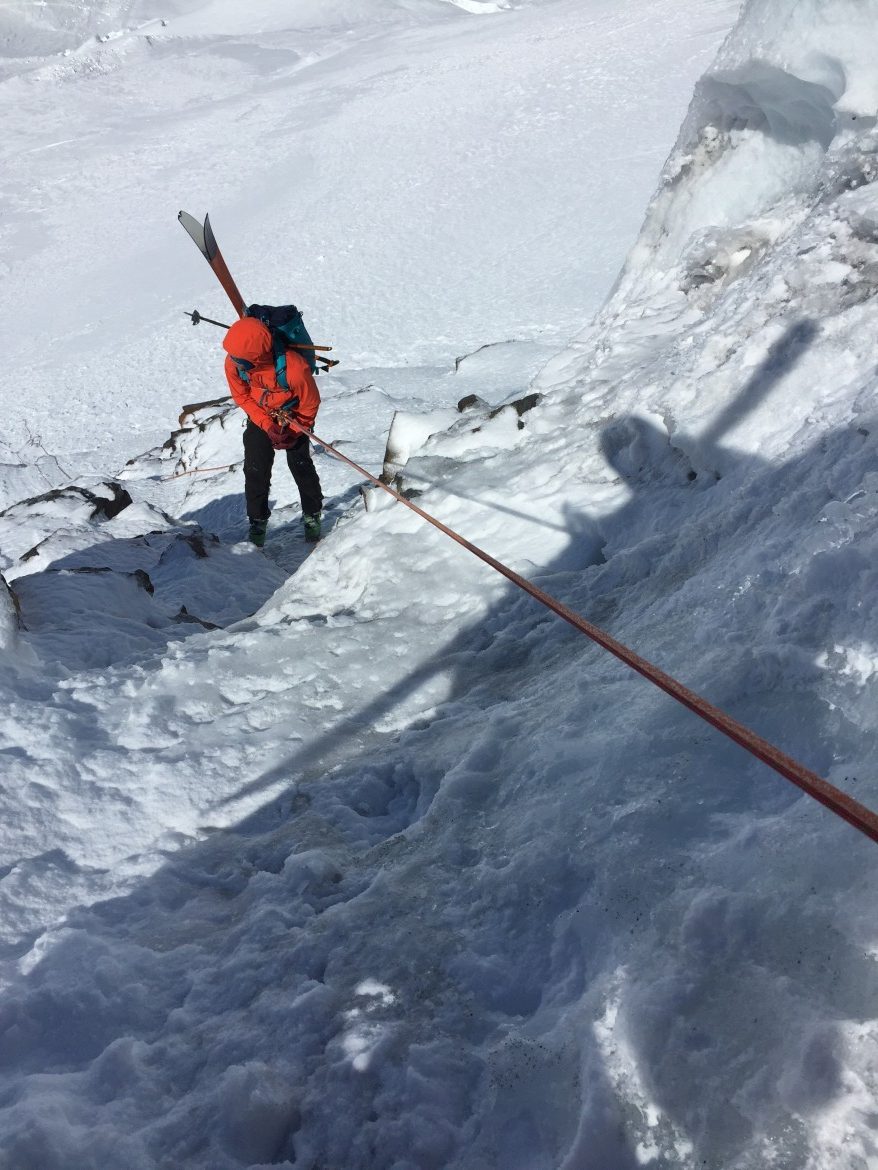
Sometimes during a ski descent a rappel is required. The RAD line offers a light, yet durable rope option for some big ski objectives. Again, if a hyper-static line is new to you, please use this tool wisely and appropriately.
Even if you have years of experience using dynamic climbing ropes, particularly thicker diameter ropes, say in the 9-10.5mm range, practice rappelling on a RAD line in a highly controlled environment before using it in high-consequence scenarios. A 6mm line, RAD or not, is harder to grasp and will run through a rappel system faster without adding additional carabiners and/or using the proper rappel device.
Know your tools and know how to use them for their appropriate applications. A RAD line is handy, and its weight is not a deterrent too haul along. Hyper-static ropes do have their limitations; but when used appropriately, they open up some possibilities and can make travel in the alpine safer.
Petzl has published an excellent brief on the RAD line. You can find that material here.
Ben grew up climbing, skiing, and fly-fishing in the Greater Yellowstone
Ecosystem and has been lucky to continue living in this great place. Ben began
guiding fly-fishing at age 18 while attending college at the University of Montana,
where he studied cartography and resource conservation. At age 23, he began a
career as a mountain guide and began work for Exum mountain guides in
Jackson, Wyoming, where he lived for 5 Years. Recently, Ben has moved back to
the mountains of his childhood and now resides in Red Lodge, MT, with his Wife
Leslie and his Dog Cash. He now splits time managing a family fly-fishing
business, ski guiding in Cooke City, and of course, getting into the mountains as
much as possible.

